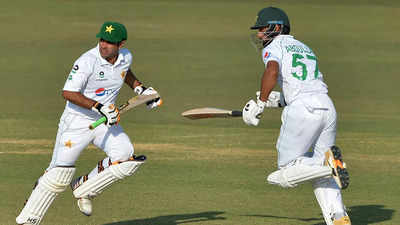
A top-order batsman was expected to bat whatever the time of the day, and it worked.

The Australians under Steve Waugh attempted for a while to change this. Nightwatchmen have existed right from the first Test onwards. If a top batsman is expected to have problems, how can a less skilled batsman be expected to handle difficult bowling conditions? Personally, I believe that the use of the nightwatchman is not founded on a rational basis. In addition, an unplayable ball for Rabada could very well be a normal delivery for Amla. An unplayable ball can be bowled at 4.52pm, 10.12am or 1.35pm. If the idea of sending in a nightwatchman is to protect a top batsman from an unplayable ball, that does not wash. Contrast this to how Don Bradman reversed the batting order in the MCG Test in 1937. A judicial change in batting order might have saved at least a top batsman or two. Cheteshwar Pujara, KL Rahul and Ajinkya Rahane batted in their usual positions and were dismissed. India had secured a lead of just over 100 runs after tea on the third day. If the captain was ready to send Rabada just two overs in, why could he not be sent to open? Think back to the SSC in Colombo during the Indian tour of Sri Lanka in 2015. It is near certain that Elgar and Markram would walk in even if there were 20 minutes to go. The next quirk is in the handling of openers. It is true that having two nightwatchmen at the crease would throw the batting order out of gear.

Now, it is almost certain that if another wicket falls, Hashim Amla will walk in and not Keshav Maharaj. Say, Dean Elgar and Aiden Markram open the innings 30 minutes before close of play. There is inconsistency in the application of the nightwatchman policy. Yet the nightwatchman is as much part of Test cricket as white clothing, the follow-on, a new ball after 80 overs, and so on. It is counter-intuitive that a batsman of lower ability is sent to bat ahead of more accomplished batsmen in possibly more difficult batting conditions. The idea is understandable, since Test cricket is the rare sport where an adjournment in the evening followed by resumption the next day is woven into its fabric. The concept of a nightwatchman in cricket is an enigma.


 0 kommentar(er)
0 kommentar(er)
